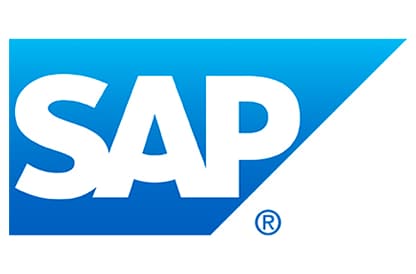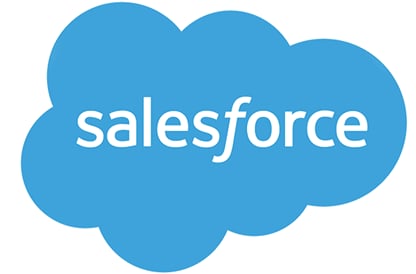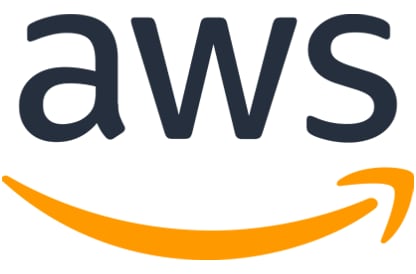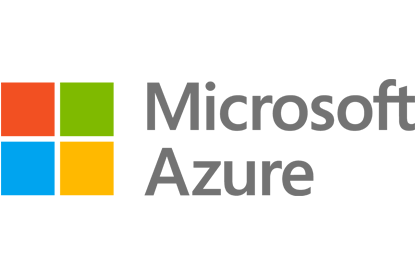Why OpenText
Why OpenText
Overview Why OpenText
OpenText brings decades of expertise to help you unlock data, connect people and processes, and fuel AI with trust
Manage and connect data
Unify data seamlessly across your enterprise to eliminate silos, improve collaboration, and reduce risks
AI-ready information
Get AI-ready and transform your data into structured, accessible, optimized information
Built-in security and compliance
Meet regulatory and compliance requirements and protect your information throughout its lifecycle
Empowering people
Overview Empowering people
OpenText helps people manage content, automate work, use AI, and collaborate to boost productivity
Customers
See how thousands of companies around the world are succeeding with innovative solutions from OpenText
Employees
Our people are our greatest asset; they are the life of the OpenText brand and values
Corporate Responsibility
Learn how we aspire to advance societal goals and accelerate positive change
Partners
Find a highly skilled OpenText partner with the right solution to enable digital transformation
How we compare
Content Management
Service Management
Deploy anywhere
Overview Deployment options
Explore scalable and flexible deployment options for global organizations of any size
Sovereign cloud
Local control. Global scale. Trusted AI
Private cloud
Your cloud, your control
On-premises
Free up resources, optimize performance and rapidly address issues
Public cloud
Run anywhere and scale globally in the public cloud of your choice
AI leadership
Overview Aviator AI
See information in new ways
OpenText™ Aviator AI
AI that understands your business, your data, and your goals
OpenText™ MyAviator
Say hello to faster decisions. Your secure personal AI assistant is ready to get to work
OpenText™ Business Network Aviator
Gain better insights with generative AI for supply chains
OpenText™ Content Aviator
Power work with AI content management and an intelligent AI content assistant
OpenText™ Cybersecurity Aviator
Improve your security posture with AI cybersecurity and agile threat detection
OpenText™ DevOps Aviator
Enable faster app delivery, development, and automated software testing
OpenText™ Experience Aviator
Elevate customer communications and experiences for customer success
OpenText™ Service Management Aviator
Empower users, service agents, and IT staff to find the answers they need
Aviator AI
Overview Aviator AI
See information in new ways
OpenText™ Aviator AI
AI that understands your business, your data, and your goals
OpenText™ MyAviator
Say hello to faster decisions. Your secure personal AI assistant is ready to get to work
OpenText™ Business Network Aviator
Gain better insights with generative AI for supply chains
OpenText™ Content Aviator
Power work with AI content management and an intelligent AI content assistant
OpenText™ Cybersecurity Aviator
Improve your security posture with AI cybersecurity and agile threat detection
OpenText™ DevOps Aviator
Enable faster app delivery, development, and automated software testing
OpenText™ Experience Aviator
Elevate customer communications and experiences for customer success
OpenText™ Service Management Aviator
Empower users, service agents, and IT staff to find the answers they need
Analytics
Overview Analytics
Predict, act, and win with real-time analytics on a smarter data platform
OpenText™ Aviator Search(AI)
Give users access to the answers they need, faster and easier, with multi-repository AI-based search that lets you contextualize everything from clicks to conversations
Business Network
Overview Business Network
Connect once, reach anything with a secure B2B integration platform
Content
Overview Content
Reimagine knowledge with AI-ready content management solutions
OpenText™ Content Aviator(AI)
Supercharge intelligent workspaces with AI to modernize work
Cybersecurity
Overview Cybersecurity
Integrated cybersecurity solutions for enterprise protection
OpenText Cybersecurity for SMBs & MSPs
Purpose built data protection and security solutions
OpenText™ Cybersecurity Aviator(AI)
Reinvent threat hunting to improve security posture with the power of agile AI
DevOps
Overview DevOps
Ship better software—faster—with AI-driven DevOps automation, testing, and quality
Experience
Overview Experience
Reimagine conversations with unforgettable customer experiences
Observability and Service Management
Overview Observability and Service Management
Get the clarity needed to cut the cost and complexity of IT operations
OpenText™ Service Management Aviator(AI)
Redefine Tier 1 business support functions with self-service capabilities from private generative AI
APIs
Overview APIs
Build custom applications using proven OpenText Information Management technology
OpenText™ API Services
Build it your way with OpenText Cloud APIs that create the real-time information flows that enable custom applications and workflows
Device and Data Protection
Overview Device and Data Protection
Protect what matters, recover when it counts
Unified Endpoint Management Tools
- OpenText™ Endpoint Management
- OpenText™ ZENworks Suite
- OpenText™ ZENworks Service Desk
- OpenText™ ZENworks Configuration Management
- OpenText™ ZENworks Endpoint Security Management
- OpenText™ ZENworks Full Disk Encryption
- OpenText™ ZENworks Endpoint Software Patch Management
- OpenText™ ZENworks Asset Management
Solutions
Trusted Data & AI
Overview Trusted Data & AI
Secure information management meets trusted AI
OpenText AI Data Platform
A unified data framework to elevate data and AI trust
OpenText Aviator Studio
A place where you can build, deploy, and iterate on agents in your data's language
OpenText Discovery
A set of tools to help ingest data and automate metadata tagging to fuel AI
OpenText Data Compliance
A suite of services and APIs that make governance proactive and persistent
OpenText Aviator AI Services
Professional services experts who help you on your AI journey
Information Reimagined
Overview Information Reimagined
Get greater visibility and sharper insights from AI-driven information management. Ready to see how?
Knowledge reimagined
Transform daily work with enterprise content management powered by AI
Service Management reimagined
Cut the cost and complexity of IT service management, AIOps, and observability
Connections reimagined
AI-powered B2B integration for supply chain success
Conversations reimagined
Drive value, growth, and loyalty with connected customer experiences
Engineering reimagined
Agile development and software delivery? It only seems impossible
Security reimagined
Cybersecurity for the Enterprise
Decisions reimagined
Unlock insights with AI data analytics
Artificial Intelligence
Overview Aviator AI
See information in new ways
OpenText™ Aviator AI
AI that understands your business, your data, and your goals
OpenText™ MyAviator
Say hello to faster decisions. Your secure personal AI assistant is ready to get to work
OpenText™ Business Network Aviator
Gain better insights with generative AI for supply chains
OpenText™ Content Aviator
Power work with AI content management and an intelligent AI content assistant
OpenText™ Cybersecurity Aviator
Improve your security posture with AI cybersecurity and agile threat detection
OpenText™ DevOps Aviator
Enable faster app delivery, development, and automated software testing
OpenText™ Experience Aviator
Elevate customer communications and experiences for customer success
OpenText™ Service Management Aviator
Empower users, service agents, and IT staff to find the answers they need
Industry
Overview Industry solutions
Improve efficiency, security, and customer satisfaction with OpenText
Energy and resources
Transform energy and resources operations with cloud, cybersecurity, and AI
Financial services
Boost customer experience, compliance, and efficiency with AI
Government
Reimagine your mission with government-secure information management
Healthcare and life sciences
Improve care delivery and patient engagement with AI-powered solutions
Legal
Modernize legal teams with automated, AI-powered legal tech solutions
Manufacturing
Modernize manufacturing operations and logistics to reduce costs and ensure compliance
Retail and consumer goods
Enhance consumer engagement with omnichannel retail solutions and AI
Enterprise Application
Overview Solutions for Enterprise Applications
Run processes faster and with less risk
Services
Services
Overview Services
Achieve digital transformation with guidance from certified experts
Professional Services
Modernize your information management with certified experts
Customer Success Services
Meet business goals with expert guidance, managed services, and more
Support Services
Turn support into your strategic advantage
Managed Services
Free up your internal teams with expert IT service management
Learning Services
Discover training options to help users of all skill levels effectively adopt and use OpenText products
Professional Services
Overview Professional Services
Modernize your information management with certified experts
Customer Success Services
Overview Customer Success Services
Meet business goals with expert guidance, managed services, and more
Support Services
Overview Support Services
Turn support into your strategic advantage
Managed Services
Overview Managed Services
Free up your internal teams with expert IT service management
Learning Services
Overview Learning Services
Discover training options to help users of all skill levels effectively adopt and use OpenText products
Partners
Find a Partner
Overview Find a partner
Information is the heartbeat of every organization. We build information management software so you can build the future
Cloud Partners
Overview Cloud Partners
OpenText partners with leading cloud infrastructure providers to offer the flexibility to run OpenText solutions anywhere
Enterprise Application Partners
Overview Enterprise Application Partners
OpenText partners with top enterprise app providers to unlock unstructured content for better business insights
Partner Solutions
Overview Partner Solutions
Discover flexible and innovative offerings designed to add value to OpenText solutions
Resources for Partners
Overview Resources for Partners
Discover the resources available to support and grow Partner capabilities
Support
Overview Customer Support
Get expert product and service support to accelerate issue resolution and keep business flows running efficiently
Resources
Overview Resources
Explore detailed services and consulting presentations, briefs, documentation and other resources
Choose your region:
Europe, Middle East and Africa
Asia–Pacific
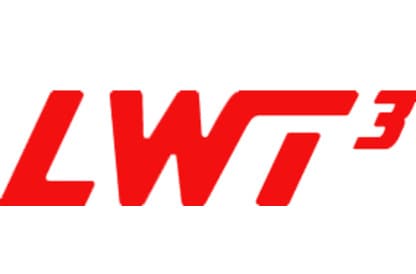 LWT3
LWT3
To reduce injury rates for workers, cut healthcare costs and boost industrial productivity, LWT3 is using OpenText™ Vertica to power an advanced biomechanical analytics solution

Products and services
Outcomes
- Handles large and growing data sets faultlessly
- Enables sophisticated, high-performance analytics
- Scales seamlessly to meet multi-petabyte requirements
- Offers low initial pricing and clarity around likely future costs
Challenge
To help reduce occupational diseases, LWT3 wanted a flexible, high-performance platform for analyzing enormous bio-mechanical data sets.
Details
Understanding and optimizing human movement
LWT3 designs, manufactures, and tests IoT devices and wearables, powered by physiological sensors that provide data to help discover the root causes of human bio-mechanical stresses. The company gathers the data in real-time, and completes its analysis using big data and machine learning platforms, all protected by blockchain-based data security engines.
VerticaPy brings many functions available in the Anaconda stack to Vertica (now OpenText), making it easy to use existing Python code and develop additional functionalities, essential for our plans to expand WINGS into other sectors.
In a specific project, the company is working with industry partners to address the challenges of Musculoskeletal Disorders (MSD). According to the European Agency for Safety and Health at Work, more than half of the 159 million workers in Europe suffer from MSD. And of the 61 million people working in manufacturing, construction, and logistics, as many as 46 million (70%) suffer from some form of MSD. The condition—typically caused and/or aggravated by physical work—represents a huge and increasing cost to society. In EU member states, the annual cost is estimated to be EUR 240 billion, which represents a cost of up to 2% of total GDP.
Paolo Belluco, Head of R&D, LWT3, comments, “Our objective is to understand work-related MSD injuries so that we can work with industry partners to decrease their occurrence and impact. In doing so, we can reduce the costs to society and increase productivity, while ensuring better health outcomes, improved quality of life, and a stronger economy for all.”
Putting predictive analytics to work
In the initial stages of the new project, LWT3 set up a pilot scheme to gather and analyze data with industry partners. The goal was to measure and correlate physical movements and injuries, in order to build predictive models that could both inform best practices in industry and trigger warning signals about the risk of developing or aggravating MSD.
Paolo Belluco continues, “We designed and prototyped an advanced set of wearable sensors to monitor the position, movement, and strain on key muscles, and record how people execute their work in industrial settings. This generates huge data volumes.”
LWT3 wanted an analytics platform capable of anonymizing, aggregating, and correlating personal bio-mechanical and health data. As the company’s sensors harvest more data from more people, the predictive accuracy will increase. With massive scale in mind, the company looked for an analytics engine that could scale easily, and handle both batch and stream analysis.
Managing enormous data sets in a flexible way
LWT3 selected the Vertica Analytics Platform as the ideal start-small, grow-without limits solution for analyzing MSD-related data through its WINGS product. WINGS is an intelligent wearable system that uses custom electro pads to measure bio signals and movement, working with sensors in machinery to reveal muscle stress, strength, and fatigue in real time.
“We will be capturing very large data flows from wearable devices within very short timescales—even at the pilot stage,” remarks Paolo Belluco. “It was very important to us to build a scalable analytics solution right from the start, and Vertica (now OpenText) offers the capacity for these very large data sets that will give LWT3 predictive capabilities around MSD.”
To run its OpenText (formerly Vertica) solutions, LWT3 relies on an in-house hyper-converged data-center, with replication to a private cloud environment hosted by Gamma Studio, an Italian IT systems integrator and OpenText (formerly Vertica) technology partner in Milan. The hybrid model delivers high performance combined with the option to scale rapidly.
Paolo Belluco comments, “The Vertica (now OpenText) pricing model suits our business perfectly: The per-terabyte fee combines low initial costs with full clarity about our likely future spend as data volumes grow. In addition, VerticaPy brings many functions available in the Anaconda stack to Vertica (now OpenText), making it easy to use existing Python code and develop additional functionalities, essential for our plans to expand WINGS into other sectors.”
Reducing injuries and improving quality of life
WINGS is a first-of-its-kind solution, so the direction in which LWT3 heads will be defined by initial results. The company therefore needs to be agnostic about the types of data it collects during the project, and how it processes that data. Paolo Belluco reports, “Vertica (now OpenText) gives us the ability to capture and work with any kind of data, so we are confident we have the right framework in place. It’s simple to move our data into Vertica (now OpenText), and the platform offers exceptional performance for the analysis of our anticipated data sets.”
Now that all the technical components are in place, LWT3 is working with industry partners to roll out the pilot and gather bio-signals from real-world workers. By analyzing billions upon billions of sensor data-points from 10,000 individuals, the company will be able to see in great detail how workers interact with the physical environment and machinery, and what impact this has on their bodies.
Vertica (now OpenText) gives LWT3 a flexible, high-capacity, high-performance analytics engine that can capture and process huge amounts of bio-mechanical data. We are confident that with Vertica (now OpenText) we have chosen the right framework for scalability and growth, capable of offering benefits right across society.
“Our goals are to reduce the incidence and severity of work-related MSD, and to enhance the way in which people work with machinery,” says Belluco. “By building and analyzing huge biometric data sets with Vertica (now OpenText), we can create best-practice approaches—for example, telling people the best way to lift a product or interact with a piece of manufacturing equipment. We can alert workers when their physical movement is putting them at risk of an injury.”
Using best practices derived from the analysis of real-world work, manufacturing businesses will be able to improve the efficiency and productivity of their processes, reduce injuries and related healthcare costs, cut the number of days lost to injury, and improve their reputation for safety. For employees, the benefits will be improved working conditions, reduced pain and discomfort, longer and healthier working lives, and improved quality of life during both employment and retirement. Moreover, reducing the incidence of MSD will result in significant reductions in healthcare costs and increases in GDP.
The WINGS wearable computer also has the potential to be used outside of industrial settings—for example, LWT3 plans to extend its use to wearable telemedicine. The system could be used by physiotherapists and occupational therapists to gather vital diagnostic information or to provide alerts on risky movements.
Paolo Belluco concludes, “Vertica (now OpenText) gives LWT3 a flexible, high-capacity, high-performance analytics engine that can capture and process huge amounts of bio-mechanical data. We are confident that with Vertica (now OpenText) we have chosen the right framework for scalability and growth, capable of offering benefits right across society.”
About LWT3

Founded by Human-Machine Interface specialists, LWT3 creates innovative solutions to enable biomechanical movement analysis, for almost any human activity from sports to music to manufacturing. The company combines its expertise in three key areas—data harvesting (IoT devices, bio-signals, prototyping), data processing (mining, machine learning, data fusion), and data visualization (dashboard, AR/VR, haptics)—to help organizations monitor and optimize biomechanics.
